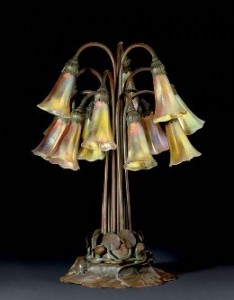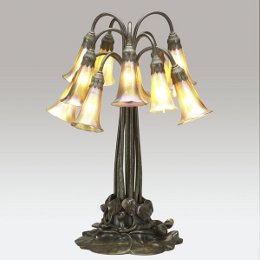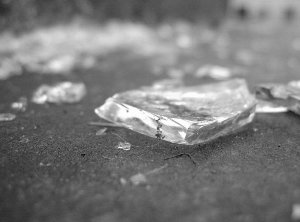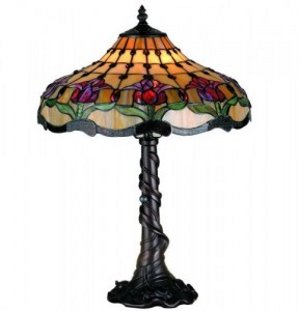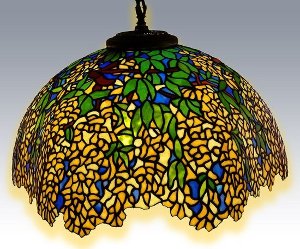As you may be aware, Tiffany Studios produced much more than their standard stained glass lamp shades. There were many different products but in keeping with lighting one beautiful design that was created was the twelve light Pond Lily lamp. The Pond Lily lamp had a three dimensional patinated bronze base design of round leaves and buds. The trumpet lily shades made of favrile glass seemed to have varying colors available, one with a prevalent gold hue and others being more colorful. Produced in the early 1900s, this beautiful piece measured roughly 21 1/4″ in height and the base number was 382. Some of these masterpieces are still around with recent reported sales at auctions of $21,000 and $41,800. Currently one of these lamps with the iridescent glass is being offered for sale at $65,000.
There have been many replicas made of the pond lily lamp shades and of the complete lamp itself. This Tiffany style lamp design is very popular and several companies are currently producing it or variations of it. Two of these companies are Dale Tiffany and Meyda Tiffany.
